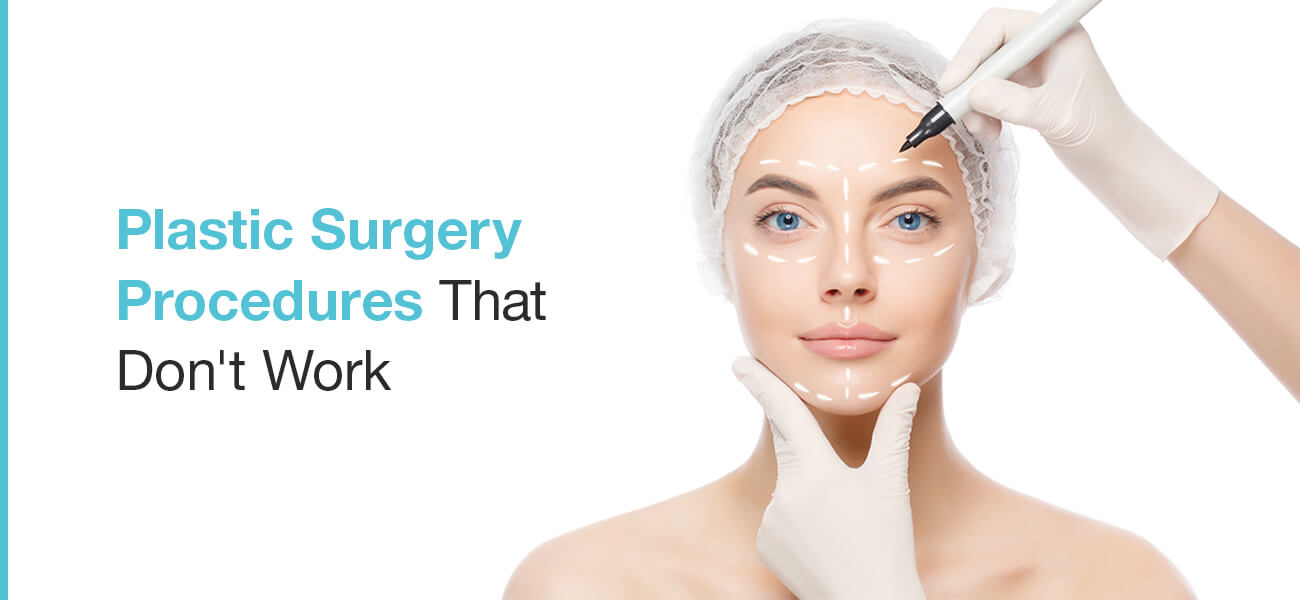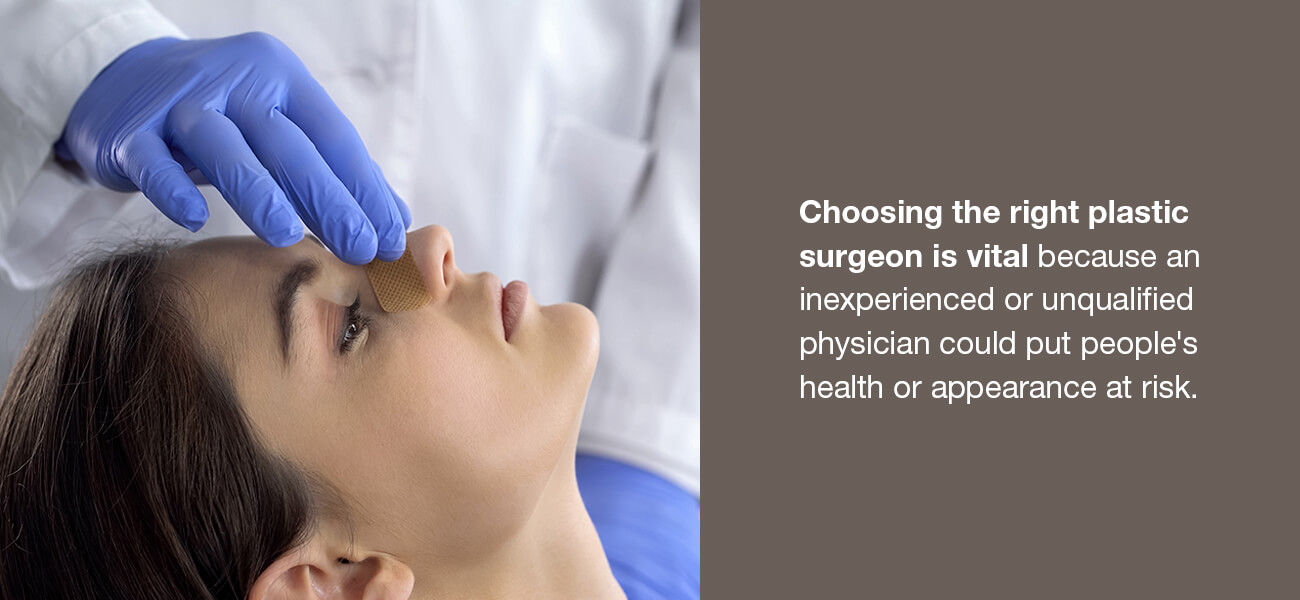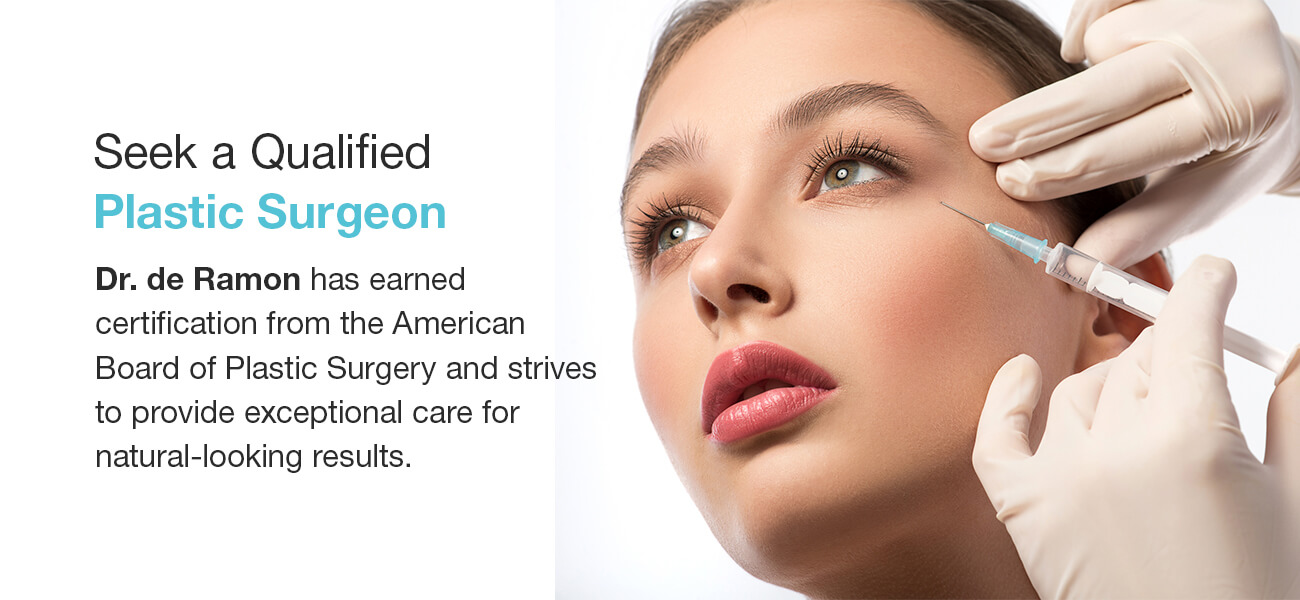Plastic Surgery Procedures That Don’t Work

Many people seek plastic surgery to reduce the appearance of wrinkles, add volume to their skin, lift and tighten targeted areas and reduce the appearance of fat. When performed by a qualified plastic surgeon, cosmetic procedures are safe and produce the desired results. Others pose severe health risks that outweigh the ideal outcomes. People considering altering their appearance must understand which treatments to pursue and avoid.
Does Plastic Surgery Work?
Expertly performed plastic surgery can help people achieve their aesthetic goals and improve their self-esteem. When qualified plastic surgeons perform procedures, they can create beautiful, natural-looking outcomes. However, there are risks involved with cosmetic surgery which can cause undesirable results, health complications, permanent damage and even death. Achieving ideal results from plastic surgery depends on the procedure and the surgeon who performs it.
How to Avoid Ineffective Procedures
While it’s a significant step toward achieving life goals and improving quality of life, the decision to undergo plastic surgery is never something to take lightly. It isn’t a choice people should make in hopes of looking like someone else or pleasing others. Prospective cosmetic patients can take the following steps to avoid risks and hazards.
1. Research
Before scheduling a cosmetic procedure, savvy patients should research the likelihood of achieving their desired outcome, plus any potential complications. Board-certified cosmetic surgeons undergo extensive training to ensure the techniques they use are safe and effective. Informed patients do their homework, and never choose a surgeon or a surgery on a whim.
2. Avoid At-Home Procedures
At-home treatments performed by physicians or patients such as dermal fillers appeal to many people because they are often cheaper and more convenient than in-office procedures. However, these fillers can cause health issues and permanent skin damage. People can purchase devices that use pressure to push fillers into the skin without needles to plump lips or reduce the appearance of wrinkles. These tools are dangerous because they give people no control over where the fillers end up in the body, which can create lumps, scarring, discoloration and life-threatening complications.
Using dermal filler tools can lead to severe infections if bacteria are present, and shared devices can transmit disease. Other life-threatening risks include blindness, tissue death and stroke if the fillers enter and block a blood vessel.
Unlike fillers administered by health professionals, at-home fillers have not earned FDA approval, are frequently not purchased through legal channels from the manufacturer, and may contain harmful or toxic ingredients that cause allergic or adverse reactions and permanent disfigurement.

3. Choose a Reputable Plastic Surgeon
Choosing the right plastic surgeon is vital because an inexperienced or unqualified physician could put people’s health or appearance at risk. Incorrectly or inexpertly performed cosmetic procedures can cause infections, deformations and sometimes death. When choosing a plastic surgeon, ensure they have the following qualities:
- Board certification in plastic surgery
- Experience in performing the desired surgery
- The ability to provide consistently outstanding results
- Honesty and integrity
For plastic surgeons, earning certification from the American Board of Plastic Surgery ensures they have the extensive education, training and experience to perform delicate surgeries safely and correctly. Since the field of plastic surgery involves many sub-specialties, potential patients will also want to select a surgeon who specializes in the specific procedure they plan to have. For example, successfully augmenting breast tissue is significantly different from operating on the delicate structures within the nose.
When choosing a plastic surgeon, future patients should look at before-and-after results to ensure they are consistent and match the desired aesthetic. In addition to these factors, people should seek a trustworthy, reputable surgeon. Plastic surgeons must be honest about possible outcomes, risks and recommendations when discussing procedures with patients.
Are Permanent Fillers Safe?
Injectable fillers are gels that volumize areas of the face to push out fine lines and wrinkles and add volume to cheeks and lips. Temporary injectable fillers such as collagen and hyaluronic acid temporarily add volume to areas of the skin and eventually metabolize, requiring touch-up appointments to maintain results. Permanent fillers such as liquid silicone and Aquamid stay in the body longer but are not safe to use.
Permanent fillers cause complications such as distorted appearances and permanent attachment to tissues. These fillers can migrate from their injection site and lead to deformations in the skin.
Is BBL Safe?
The Brazilian butt lift is a procedure that produces more fullness in the buttocks by transferring “donor” fat from another part of the body. This procedure can be unsafe when performed incorrectly and carries risk for the following complications:
- Scars
- Pain
- Infection
- Skin lumps
- Fat embolism in the lungs or heart
Removing fat from one area of the body and injecting it into another area can create lumps under the skin in the donor and recipient sites. People also risk losing skin in these areas if an infection occurs from the procedure.
When a surgeon performs the procedure incorrectly, they risk injecting fat into the large veins in the gluteal muscle. If this occurs, the fat can travel to the lungs or heart and cause respiratory distress, or worse, death. The fatality rate of BBLs is one out of every 3,000 procedures. This number is higher than any other plastic surgery.
Is Injection Breast Augmentation Safe?
Polyacrylamide hydrogel is a permanent injectable filler for augmenting the breasts and correcting soft-tissue contours in the face. It can cause complications such as breast deformities, pain, subcutaneous nodules, fistula formation and migration. Migration of the gel can create breast asymmetry and altered positioning of the nipples. In many cases, patients need breast reconstruction surgery or a mastectomy.
Correcting Ineffective Cosmetic Surgery
In some cases, qualified plastic surgeons can revise unsuccessful procedures. For example, experienced surgeons can correct at-home facial fillers by disolving filler substances or massaging the affected areas to improve asymmetry or remove lumps. Some complications with plastic surgery procedures cause permanent, irreversible damage, but board-certified surgeons can often offer solutions.
Seek a Qualified Plastic Surgeon
Avoiding dangerous plastic surgery procedures and at-home cosmetic fillers is vital. Potential patients should always seek a plastic surgeon with ample training and experience in their desired surgeries. Dr. de Ramon has earned certification from the American Board of Plastic Surgery and strives to provide exceptional care for natural-looking results. Complete our online form or call us at 717-798-8573 to schedule a personalized consultation.


